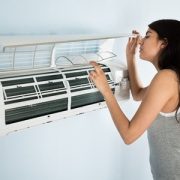Garage Door Safety
Inspecting Garage Door Openers for Safety:
The garage door is generally the largest moving object on a home. A garage door can exert very
strong forces and should reverse if there is an emergency. Improperly operating automatic reversing
mechanisms on garage door openers have been linked to many injuries and even deaths. Making
sure the safety reverse is operating properly is important.
Safety Reverse Systems:
Modern openers have two safety reverse features on the door, which will automatically reverse the
door if it encounters an obstacle upon closing. In 1982, a voluntary industry standard was created that
requires an automatic reversing mechanism be part of the garage door opener. Under U.S. federal
law (UL 325), garage door openers manufactured for the U.S since 1993 must also include a
secondary safety reversing system, such as photoelectric eyes mounted no higher than six inches
above the ground, or an electric safety edge mounted on the bottom of the door, which reverses upon
contact.
Check To See If Your Garage Door Is Working Properly:
Before you check the safety reverses, run the door up and down noting movement and any unusual
noises, and check the tracks for any damage. Also check for loose/missing hardware on the door and
tracks. Have repairs completed by a qualified garage door professional. Identify the type of door
present and the condition of the overhead door noting any damage/deterioration on the door.
Testing the safety reverse of the garage-door opener:
With the door fully open, place a 2×4 flat on the floor, centered under the garage door. Do not attempt
to stop the door with your hands. Operate the door in the down direction. When the door hits the
board it should stop and reverse.
Testing the photoelectric eyes:
Operate the door, and as the door is coming down, use a long stick to cross the path of the sensors.
If operating properly, the door should stop and reverse as the stick crosses the sensors. A
malfunctioning safety reverse or photoelectric eyes is a safety hazard.
Other Things To Look For:
If the garage door has extension springs, check to see if there is a safety cable running
through the center of the springs and properly secured. If not, safety cables should be
installed.
Look for any extension cord wiring or any wiring that wasn’t professionally installed. The
garage should have a receptacle that the garage door opener can be directly plugged into.
Check that an emergency release handle is present (red handle) and that it works by pulling
down on the handle, which should detach the door from the door opener. Reset after testing.
The transmitter (open/close button) for the garage-door opener should be mounted at least 5′
above the floor so that small children can’t reach it.





